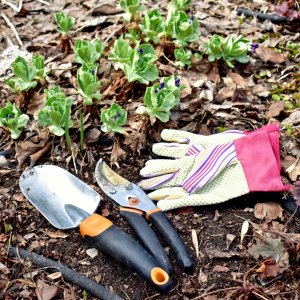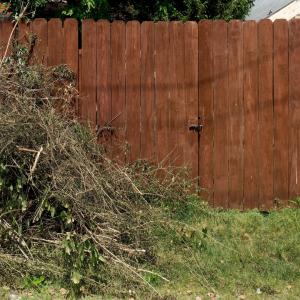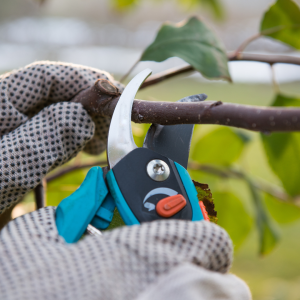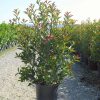 February’s arrival in Fort Worth brings a chill, and the promise of spring is just around the corner. It’s a time when gardeners, despite the cold, can start laying the foundation for a season of vibrant growth and color. At Premier Nursery, we’re well-versed in the art of garden preparation. The efforts you put into your garden now, during these quieter winter days, are the secret to a lush, flourishing garden once the warmer weather rolls in. So, let’s roll our sleeves and dive into your go-to guide for prepping your garden this February.
February’s arrival in Fort Worth brings a chill, and the promise of spring is just around the corner. It’s a time when gardeners, despite the cold, can start laying the foundation for a season of vibrant growth and color. At Premier Nursery, we’re well-versed in the art of garden preparation. The efforts you put into your garden now, during these quieter winter days, are the secret to a lush, flourishing garden once the warmer weather rolls in. So, let’s roll our sleeves and dive into your go-to guide for prepping your garden this February.
1. Assess Your Garden Space
February’s calm provides the perfect backdrop for a reflective walk through your garden, a crucial first step in planning for the upcoming spring. You can start by revisiting the successes and challenges of the previous year. Which plants thrived, and which ones didn’t quite make it? Understanding what worked and what didn’t can offer invaluable insights for this year’s garden planning.
As you wander, watch for any signs of soil erosion. Erosion can strip your garden of vital nutrients essential for plant growth. Also, could you look for indicators of pest damage? Did certain areas suffer more than others? Identifying these trouble spots early on can help you strategize better pest control methods for the coming season.
Equally important is noting the areas that struggled last year. Was it a lack of sunlight, poor drainage, or the wrong plant in the wrong place? Each observation is a puzzle piece in the larger picture of your garden’s health and potential.
Remember, this assessment isn’t just about problem-solving. It’s also a time to acknowledge what flourished under your care.
Perhaps a particular fl ower bed consistently bloomed spectacularly, or a vegetable patch yielded an impressive harvest. These triumphs are your gardening strengths and can guide your choices as you plan for the new season.
In this quietude, let your garden speak to you. Note its whispers and murmurs. The bare branches, the soil’s texture, the remnants of last year’s growth—all hold stories and secrets of your garden’s unique needs and potential. This mindful observation is the foundation for building a thriving, vibrant spring garden.
2. Clean Up Garden Beds
As the new year begins, it’s time to give your garden beds the fresh start they deserve. Cleaning up your garden beds is more than a chore; it’s a rejuvenation process that sets the stage for the upcoming growing season. Begin by removing the remnants of last season – the fallen leaves, the wilted stems, and the faded flowers. While part of the natural cycle, these leftovers can become havens for pests and diseases if left unchecked.
As you clear away the debris, pay close attention to any dead plants. These should be carefully removed to prevent any diseases they might carry from spreading to new growth in the spring. However, it’s important to distinguish between genuinely dead plants and those that are simply dormant for the winter. If in doubt, it’s best to wait and see if they show signs of life as the weather warms.
This cleanup is also an excellent opportunity to observe the health of your soil. Remove any weeds that have taken hold, ensuring their roots come out, too, as this will prevent them from competing with your desired plants for nutrients and space. Be gentle as you work around any perennials just sleeping beneath the surface, waiting for their moment to emerge.
Remember, while cleaning, organic matter like leaves and certain plant remnants can be valuable for composting. If you have a compost bin, add suitable material to it. This practice cleans your garden beds and recycles nutrients back into your garden, promoting a sustainable growth cycle.
Clearing your garden beds is like preparing a canvas for a masterpiece. It’s about creating a clean, healthy foundation from which spring’s vibrant colors and textures can emerge. With every weed pulled and every leaf cleared, you’re setting the stage for a garden ready to burst into life.
 3. Soil Preparation
3. Soil Preparation
The vitality of your spring garden is deeply rooted in the health of your soil, making February the perfect time for soil preparation. This is the moment to ensure that the foundation of your garden is as nurturing as it can be for the upcoming growing season.
Start by testing the pH level of your soil. This crucial step will guide you in understanding the acidity or alkalinity of your garden soil. This knowledge is critical in Fort Worth, where soil
types can range dramatically. Depending on whether your soil is more acidic or alkaline, you may need to make adjustments to create the ideal growing environment for your plants.
Amending your soil is next. This could mean adding organic matter such as compost, improving soil structure, adding essential nutrients, and increasing moisture retention. If your soil test reveals specifi c nutrient defi ciencies, it is time to address them. Whether adding bone meal to boost phosphorus or using greensand for potassium, the proper amendments can make all the diff erence.
For those in Fort Worth, remember that local soil often has unique characteristics. Some areas may have heavier clay soil, requiring more organic matter to improve drainage and aeration. Others might have sandy soil that needs more compost to help retain both moisture and nutrients.
At Premier Nursery, we’re equipped with all the supplies you need to bring out the best in your soil. From pH testing kits to a wide range of soil amendments, we have everything to help you tailor your soil preparation to your garden’s needs. Our staff can also provide expert advice tailored to Fort Worth’s diverse soil types, ensuring you make the right choices for your garden.
Preparing your soil in February is like setting a solid and healthy foundation for a house. It’s a fundamental step supporting everything you build upon – a lush, vibrant, thriving spring garden.
4. Plan Your Plant Palette
Designing your garden is akin to painting a landscape where each plant adds its unique hue and texture. When planning your plant palette for the spring, it’s essential to consider the local Fort Worth climate and soil characteristics. This consideration will not only ensure the success of your garden but also enhance its beauty and sustainability.
Native plants should be at the heart of your garden design. These plants naturally adapt to the Fort Worth environment, making them more likely to thrive with less maintenance, water, and care. They provide the added benefi t of supporting local wildlife, such as birds and pollinators, which is essential for a healthy ecosystem. From the vibrant Texas Bluebonnet to the hardy Purple Conefl ower, native species off er a variety of colors and textures that can enrich your garden’s aesthetic.
However, selecting the right plants goes beyond just choosing natives. It would help if you also considered factors like sunlight exposure, water requirements, and the compatibility of diff erent plants. For instance, some plants require full sun, while others need partial shade. Understanding these needs is crucial for creating a harmonious garden where every plant can flourish.
Premier Nursery offers a wide selection of plants that are ideal for the Fort Worth area. Our experienced staff can provide personalized recommendations based on your garden’s conditions and aesthetic preferences. We can help you navigate choices, whether you’re drawn to the timeless elegance of roses or the striking presence of ornamental grasses.
When you visit us, bring any questions or ideas about your garden. Our team is here to help you create a plant palette that survives and thrives, transforming your garden into a vibrant oasis that refl ects the unique beauty of Fort Worth’s natural landscape.
 5. Prune Perennials and Shrubs
5. Prune Perennials and Shrubs
With its dormancy period for many plants, late winter presents an ideal opportunity for pruning perennials and shrubs in your Fort Worth garden. This task, far from being just a routine chore, is a vital step in promoting vigorous growth and bountiful fl owering in the upcoming spring and summer months.
Pruning is about more than just cutting back growth; it’s a strategic process that helps shape your plants, improve their health, and enhance their overall performance. Pruning can invigorate perennials by removing old growth and creating new shoots. It’s also an excellent time to cut back any dead foliage left from the previous season, giving your perennials a cleaner and more organized appearance.
Shrubs often require a slightly diff erent approach. The goal is to remove dead or weak branches, thin out overgrown areas to improve air circulation, and shape the shrub for aesthetic appeal. This strengthens the plant and helps prevent disease and pest infestations. Some flowering shrubs benefit significantly from pruning as it can stimulate the growth of new flowering shoots.
However, it’s essential to recognize that different plants have different pruning needs. The timing, extent, and technique can vary based on the type of plant, its flowering habit, and health. For example, spring-blooming shrubs often need pruning immediately after they flower, while summer bloomers can be pruned in late winter or early spring.
If you need clarification on the pruning needs of your specific plants or the best techniques, our Premier Nursery team is here to offer expert advice and guidance. We can help you understand the nuances of pruning and equip you with the tools and knowledge necessary to do it effectively. With our support, you can feel confident in your pruning eff orts, knowing you’re setting the stage for a lush, healthy, and beautiful garden in the coming months.
Premier Nursery stands ready to guide you through every step of your winter garden preparation in Fort Worth. With expertise in local plant selection, soil health, and garden design, we offer the tools, resources, and advice you need to ensure your garden thrives. Visit us at our two convenient locations for more information on how we can help you create a vibrant spring garden.


